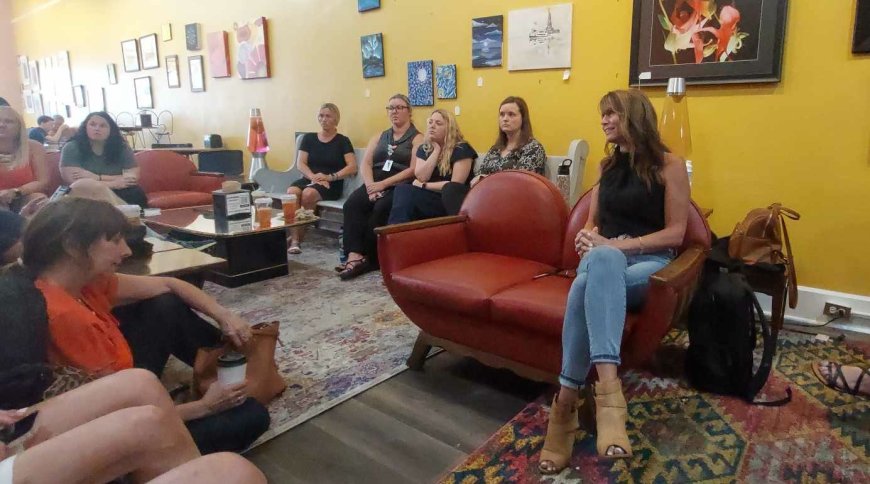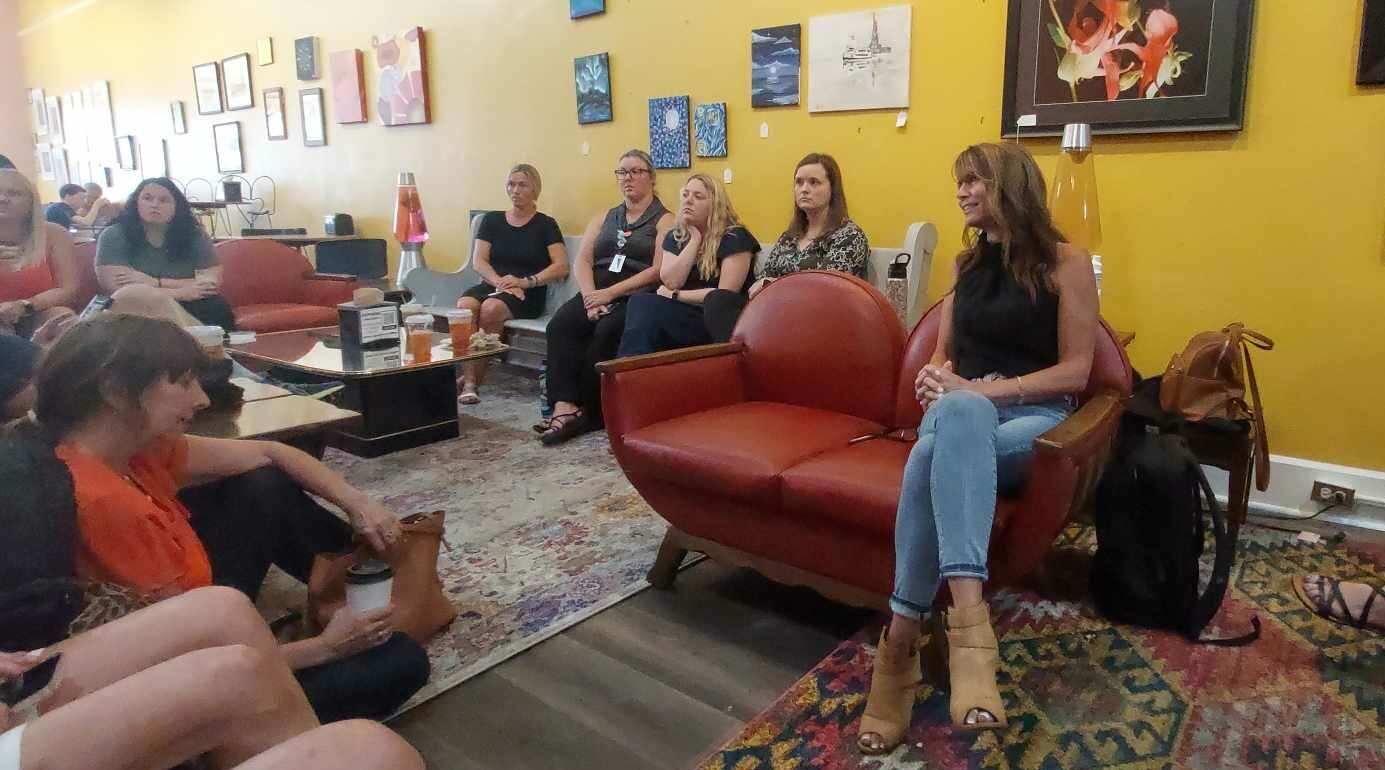Child exploitation expert uses ‘Sound of Freedom’ movie to discuss child trafficking in our neighborhoods – Muddy River News
Child exploitation expert uses 'Sound of Freedom' movie to discuss ... Muddy River News

Movie “Sound of Freedom” Raises Awareness on Child Trafficking

HANNIBAL, Mo. — “Sound of Freedom,” a movie starring Jim Caviezel and Mira Sorvino, tells the story of Tim Ballard, a former U.S. Department for Homeland Security Agent who conducted a sting operation to rescue children from international child trafficking.
Overview
The movie, which has generated over $130 million in revenue, has sparked conversations nationwide about child trafficking and the estimated 250,000 children victimized by it each year. It highlights the urgent need to address this issue and aligns with the Sustainable Development Goals (SDGs) set by the United Nations.
Local Discussion on Child Trafficking
Stefanie Kaiser, a retired detective and commercial sexual exploitation of children coordinator for the Child Advocacy Center, led a discussion in Hannibal at a United Way event. The conversation focused on recognizing child trafficking in local communities.
Child Trafficking in Communities
Kaiser emphasized that child trafficking is a local problem and often looks different from the events depicted in “Sound of Freedom.” She highlighted the common denominator in most cases: children’s easy accessibility through smartphones.
- In any community, children are easily reachable due to their access to smartphones.
- Kaiser warned that no apps are safe for kids without constant conversations and moderation.
- Gaming apps like Roblox and Minecraft have become predator hotspots, providing easy access for predators to initiate conversations with children.
Tactics Used by Child Traffickers
Kaiser explained that child traffickers are well-trained in manipulating children, using tactics such as exchanging explicit photos and arranging personal meetings either online or in-person.
- Child traffickers aim to profit from their actions and constantly adapt their strategies.
- Kaiser shared instances where children contacted local individuals online, willing to buy them drugs, vape pens, alcohol, or provide rides.
- These interactions gradually escalate from innocent requests for pictures to invasive demands for explicit content and eventually meeting up for sexual activities.
Challenges Faced by Parents
Denise Damron, director of the United Way for the Mark Twain Area, highlighted the challenges faced by parents in recognizing child trafficking:
- Children often lie about their whereabouts, making it difficult for parents to monitor their activities.
- Child trafficking victims are often living at home, and parents are unaware of the ongoing exploitation.
- Well-meaning adults, including teachers and counselors, may not suspect anything due to the presence of these children in school.
Reporting and Consent
Kaiser emphasized that many child trafficking cases are discovered through other crime investigations or when someone finds concerning conversations on a child’s phone. Victims often struggle with understanding consent and fear getting into trouble.
- Children who meet someone and receive favors, such as rides or drugs, may believe they have consented to the exploitation.
- Perpetrators manipulate victims by convincing them that they wanted the abuse, making it difficult for victims to report the crimes.
- Apps are available to monitor and restrict children’s online activities, providing an additional layer of protection.
Continuing the Conversation
Stefanie Kaiser and Denise Damron will be hosting a community presentation on sex trafficking at the United Way of Mark Twain Area on August 8 at 6 p.m. Interested individuals can learn more about The Child Advocacy Center by visiting their website or following them on Facebook.
SDGs, Targets, and Indicators
-
SDGs addressed or connected to the issues highlighted in the article:
- SDG 5: Gender Equality
- SDG 8: Decent Work and Economic Growth
- SDG 10: Reduced Inequalities
- SDG 16: Peace, Justice, and Strong Institutions
The article addresses the issue of child trafficking, which is a violation of human rights and directly linked to gender inequality, economic exploitation, inequality, and the need for strong institutions to combat such crimes.
-
Specific targets under those SDGs based on the article’s content:
- Target 5.2: Eliminate all forms of violence against all women and girls in public and private spheres
- Target 8.7: Take immediate and effective measures to eradicate forced labor, end modern slavery and human trafficking
- Target 10.2: By 2030, empower and promote the social, economic, and political inclusion of all, irrespective of age, sex, disability, race, ethnicity, origin, religion, or economic or other status
- Target 16.2: End abuse, exploitation, trafficking, and all forms of violence against and torture of children
The article highlights the need to address violence against women and girls, eradicate human trafficking, promote inclusion and equality, and protect children from abuse and exploitation.
-
Indicators mentioned or implied in the article:
- Number of reported cases of child trafficking
- Number of children victimized by child trafficking
- Amount of money generated by movies or initiatives raising awareness about child trafficking
- Number of concerned parents and citizens participating in discussions about child trafficking
- Number of cases involving the use of gaming apps as predator hotspots
- Number of instances where children contact someone local for illegal activities
- Number of cases where children are deceived into exchanging explicit photos or meeting for sexual activities
- Number of cases where children are coerced into engaging in sexual activities in exchange for goods or services
- Number of cases where parents are unaware of their children’s involvement in trafficking
- Number of cases where victims are afraid to report due to confusion about consent and fear of trouble
- Number of apps available to monitor and restrict children’s online activities
The article indirectly mentions or implies these indicators as measures to assess progress towards addressing child trafficking and protecting children from exploitation.
-
Table: SDGs, Targets, and Indicators
SDGs Targets Indicators SDG 5: Gender Equality Target 5.2: Eliminate all forms of violence against all women and girls in public and private spheres Number of reported cases of violence against women and girls SDG 8: Decent Work and Economic Growth Target 8.7: Take immediate and effective measures to eradicate forced labor, end modern slavery and human trafficking Number of reported cases of human trafficking Target 8.7: Take immediate and effective measures to eradicate forced labor, end modern slavery and human trafficking Amount of money generated by movies or initiatives raising awareness about human trafficking SDG 10: Reduced Inequalities Target 10.2: By 2030, empower and promote the social, economic, and political inclusion of all, irrespective of age, sex, disability, race, ethnicity, origin, religion, or economic or other status Number of concerned parents and citizens participating in discussions about child trafficking SDG 16: Peace, Justice, and Strong Institutions Target 16.2: End abuse, exploitation, trafficking, and all forms of violence against and torture of children Number of reported cases of child trafficking
Behold! This splendid article springs forth from the wellspring of knowledge, shaped by a wondrous proprietary AI technology that delved into a vast ocean of data, illuminating the path towards the Sustainable Development Goals. Remember that all rights are reserved by SDG Investors LLC, empowering us to champion progress together.
Source: muddyrivernews.com

Join us, as fellow seekers of change, on a transformative journey at https://sdgtalks.ai/welcome, where you can become a member and actively contribute to shaping a brighter future.







